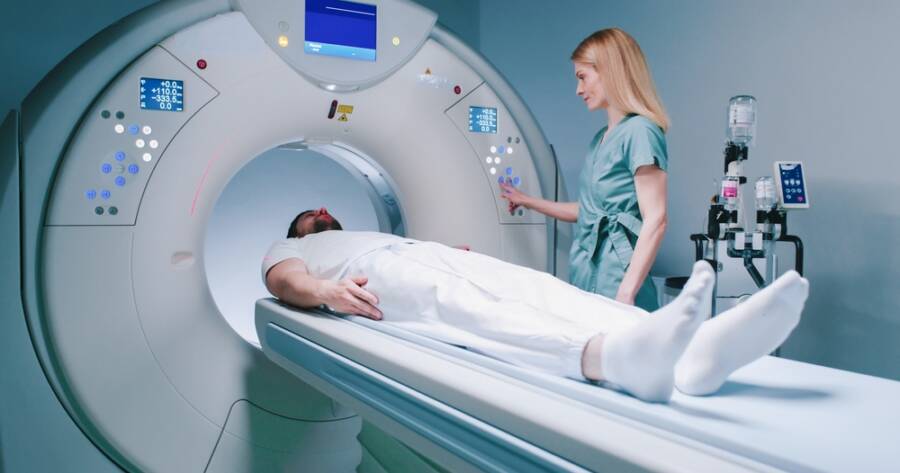Understanding Alzheimer’s disease and the integral role of medical imaging in its diagnosis and management is increasingly vital. As advanced technologies like MRI and CT scans revolutionize detection and treatment strategies, choosing the right imaging provider becomes paramount. Explore critical considerations for optimal patient care, including provider expertise, technology, patient experience, and insurance compatibility.
Understanding Alzheimer’s Disease and the Role of Medical Imaging
Alzheimer’s disease is a progressive neurological disorder that affects millions of people worldwide, characterized by memory loss, cognitive decline, and eventually, loss of the ability to carry out the simplest tasks. The importance of accurate diagnosis and monitoring cannot be overstated, as early intervention and treatment can significantly slow the progression of the disease. While therapeutic strategies continue to evolve, radiological imaging has become a cornerstone in the management and diagnosis of Alzheimer’s.
Medical imaging technologies, such as MRI and CT scans, offer essential insights into the brain’s structure and function, allowing healthcare professionals to detect abnormalities early in the course of the disease. These technologies are critical for not only diagnosing Alzheimer’s but also for monitoring disease progression and response to treatment. A solid understanding of how these imaging practices connect medical images with other clinical information is essential for creating optimal personalized treatment strategies.
Key Factors in Choosing a Medical Imaging Provider for Alzheimer’s Diagnosis
The choice of a medical imaging provider is pivotal in ensuring high-quality diagnostic services for Alzheimer’s patients. The qualifications and expertise of the radiologist are among the top priorities. Radiologists should be board-certified and possibly possess subspecializations such as neuroradiology, which is particularly relevant for brain scans used in Alzheimer’s diagnosis and tailored specialties.
Similarly, state-of-the-art imaging technology is crucial. Centers that invest in advanced equipment can provide superior imaging quality, which can lead to more accurate interpretations and lower radiation exposure for patients. Additionally, the accreditation of a facility by reputable organizations, such as the American College of Radiology, indicates high standards of care and accountability.
The Importance of a Patient-Centric Environment
In medical imaging, patient comfort and accessibility are paramount. Alzheimer’s patients benefit from a calm, supportive environment where staff are trained to handle the unique challenges of imaging nervous patients. Providers should strive to minimize wait times, have friendly staff, and maintain a pleasant atmosphere, all of which contribute to an overall positive experience throughout the imaging process. This type of environment not only reduces anxiety but also facilitates better cooperation from patients during imaging procedures.
Furthermore, diagnostic centers should be equipped with advanced technology and staffed with skilled professionals who can safely and efficiently operate machinery. The technologists, as essential contributors to the image acquisition process, should be highly-trained and certified, ensuring the clarity and quality of the images obtained. The radiologist’s ability to deliver quick and accurate results is crucial for facilitating prompt medical decisions and subsequent treatment plans.
Maximizing Insurance Compatibility and Scheduling Flexibility
Health insurance compatibility is a vital consideration when choosing an imaging center. Patients should research beforehand to confirm that their chosen provider accepts their insurance plan. This ensures that they can access necessary imaging services without the added stress of unexpected financial burdens related to coverage issues.
Scheduling flexibility is also an essential factor, as many Alzheimer’s patients may require regular imaging sessions to monitor the disease’s progression. An imaging center that offers flexible timing, including walk-in options, can significantly ease the logistical challenges involved in regular medical appointments. Such flexibility enables caregivers and patients to coordinate medical imaging with other essential healthcare appointments, ensuring continuous and comprehensive care.
Why You Should Learn More About Alzheimer’s Disease and Medical Imaging Providers Today
With the growing prevalence of Alzheimer’s disease, understanding the crucial role of medical imaging in its diagnosis and management is more important than ever. Imaging not only aids in early detection and monitoring but also helps tailor personalized treatment strategies that can make a significant difference in the patient’s quality of life. As such, being informed about how to choose the right medical imaging provider, and understanding the necessary qualifications and technologies, empowers patients and families to make knowledgeable decisions in the healthcare process.
Sources
Strategic Radiology Insights on Choosing a Provider
Health Images Tips for Evaluating Radiologists
